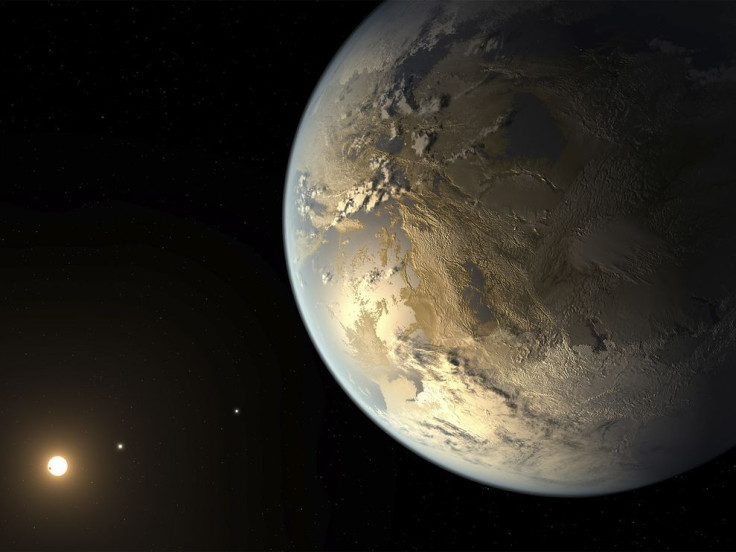Earth-Like ‘Cousin’ Kepler-186f Found 490 Light-Years Away, New Planet Is ‘Best Bet’ Yet For Extraterrestrial Life

A new planet that scientists are calling a close “cousin” of Earth was discovered nearly 500 light years away in the constellation Cygnus, NASA scientists announced Thursday. Called Kepler-186f, the exoplanet – a term given to any planet outside our solar system – is about the same size as Earth and is just the right distance from its host star for liquid water.
NASA says of all the exoplanets Kepler has spotted since it was launched in 2009, Kepler-186f is the closest thing yet to a planet that could possibly support extraterrestrial life.
"This is an historic discovery—the first Earth-size planet found in the habitable zone around its star," Geoff Marcy of the University of California, Berkeley, a planet hunter who was not involved with the team that made the discovery, told National Geographic. "This is the best case for a habitable planet yet found."
The discovery is detailed in a new study in the journal Science.
“The quest for Earth-like planets is a major focus of current exoplanet research,” the authors note. “Although planets that are Earth-sized and smaller have been detected, these planets reside in orbits that are too close to their host star to allow liquid water on their surfaces.”
Scientists say Kepler-186f is likely to be rocky and orbits its star once every 130 days. Its star is a red dwarf star called an M dwarf that is only about half as large as the sun, and correspondingly cooler and dimmer. According to DNA India, the brightness of the star on Kepler-186 at high noon is only about as bright as our sun looks to us about an hour before sunset.
Marcy said the surface temperature on the planet is “likely cool, similar to dawn or dusk on a spring day.”
M dwarf stars are the most common types of stars and scientists say that if we do find a planet with life on it, it’ll most likely be orbiting an M dwarf. M dwarfs make up 70 percent of the stars in the Milky Way galaxy.
Figuring out whether or not Kepler-186f can support life will require determining the composition and conditions of its atmosphere. Also, while the size of Kepler-196f is known, its composition and mass are not.
"Being in the habitable zone does not mean we know this planet is habitable. The temperature on the planet is strongly dependent on what kind of atmosphere the planet has," Thomas Barclay, a research scientist at the Bay Area Environmental Research Institute at Ames, and co-author of the paper, said in a statement. "Kepler-186f can be thought of as an Earth-cousin rather than an Earth-twin. It has many properties that resemble Earth."
In June 2013, astronomers discovered three new planets that could possibly support alien life orbiting the nearby star Gliese 667C. The exoplanets were found to be orbiting in the star’s habitable zone, the region that is considered just the right temperature for sustaining liquid water.
Gliese 667C is located only 22 light years away, inside the constellation Scorpius, practically making it Earth’s next-door neighbor.
© Copyright IBTimes 2025. All rights reserved.






















